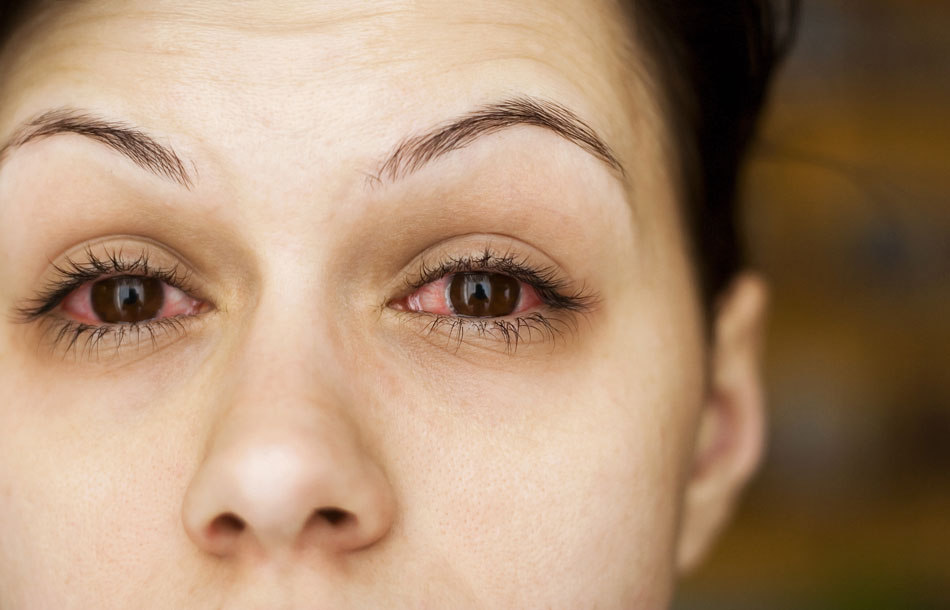How to Keep an Eye Out for 6 Potential Contact Problems

Do you wear contact lenses? Or are you thinking of ditching your glasses and switching to a pair of lenses? If so, then you should be aware that sometimes, problems can arise with contacts.
That doesn't mean you shouldn't wear them though! There are many benefits to wearing contacts, so don’t give up at the first sign of difficulty. But just like with many other good things, there are things you should be aware of and look out for.
How do you spot contact problems? The first step is knowing the exact symptoms for each one. Join us as we explore six potential contact problems that you need to be able to detect and nip in the bud!
1. Dry Eyes
When wearing contact lenses, you may notice that your eyes feel dry. But the underlying cause of this condition may not have anything to do with your contacts.
What types of things contribute to dry eye syndrome? Here are a few of them:
- Birth control pills
- Alcohol
- Dehydration
- Dry weather
Your eyes may feel drier while wearing contacts though. You can remedy this by replacing your contacts more often.
But your best route to fix this problem is to contact your optometrist. He or she may recommend eye drops or other remedies known to correct dry eye syndrome.
2. Eye Injury From Improper Use

Contact lenses shouldn't hurt when they're inserted and worn correctly. However, if they aren't used the right way, you run the risk of damaging your eyes.
The correct way of wearing contacts includes first getting a prescription. Contact lenses aren't playthings for the general public to mess with. They are medical devices you have to treat with caution to avoid any injury. So it’s important to adhere to the instructions on their care and usage.
To avoid eye injury, always insert and remove contacts as prescribed by your optometrist or the lens manufacturer. Always follow all the recommended steps in cleaning, storing and replacing your contact lenses.
3. Corneal Abrasion
Your eyes' corneas may get scratched if particles get stuck between your eyes and contacts. This may result in eye pain. For minor abrasions, lubricating eye drops can help with the healing process. But if the pain is severe or persistent enough, then medical help may be in order.
People who wear soft lenses are less at risk for this issue. If you suspect you're experiencing a corneal abrasion, talk to your doctor. The issue can get worse, so don't wait!
4. Keratitis

Keratitis is a serious eye issue that may result in your vision going downhill. You may even lose your eyesight if the issue isn't addressed.
If light starts to bother your eyes, or if you're experiencing eye pain, you may have keratitis. This means your cornea is inflamed and infected. The only way to treat this is through medical intervention, so always reach out if you suspect anything.
Keratitis can be avoided! Always make sure you're properly cleaning and caring for your contacts. This will lessen your chances of it happening to you.
If you suspect you have keratitis, contact your optometrist as soon as possible.
5. Blurry Vision
Your vision may become blurry when you're using contact lenses. But that's the opposite of what you expect from wearing the lenses. So make sure you get the issue checked out by your doctor.
One reason you may be experiencing vision issues is that your eyes change. You may end up needing a new prescription to replace the current one. Your optometrist will be able to help you determine if you need a new prescription.
Blurry vision may also be a sign of some other health issues, so don't just stick it out. Make an appointment to see your eye doctor.
6. Conjunctivitis

Like keratitis, this issue shows up in the form of inflammation and infection. But instead of affecting the cornea, this condition affects the membrane on the inside of your eyelids, as well as the whites of your eyes.
It shouldn't be a surprise that this problem happens from dirty contact lenses. That means you haven't taken care of your contacts and cleaned them properly. Or you've handled them with dirty hands.
If you have conjunctivitis (or pink eye), you may experience redness, discharge and burning. If your issue is caused by a virus, it’ll clear up by itself within a week. If it’s bacterial, you’ll have to use antibiotic eye drops or ointments for a week.
Before going to the doctor, try applying a warm compress to your eye for some relief. If the problem persists more than two weeks, then visit your eye doctor.
How to Avoid Contact Lens Problems
Although some of the problems on this list are quite serious, they can be successfully treated. But the best course of action is to prevent them in the first place.
So how can you avoid these problems? The surest way is to care for your contacts properly! Always follow the instructions you receive from your optometrist. Also, follow the ones that come with your specific lenses and solution.
Proper lens care may not completely eliminate problems. However, it's the best route to prevent issues with your contacts. Remember to always use lens solution to clean your contacts. You should never use tap water on your contact lenses. And you should definitely never use saliva! The better you take care of your contacts, the fewer problems you're likely to have.
Keep an Eye out for These Contact Problems

Eye issues aren't fun. Neither is not being able to see as well as you should. But having contact problems doesn't mean you should stop wearing your contacts permanently.
Either pausing or shortening your wear time may fix the problems. But you should discuss this decision with your optometrist. Never hesitate to reach out to your doctor if you have any concerns regarding wearing your contact lenses.
